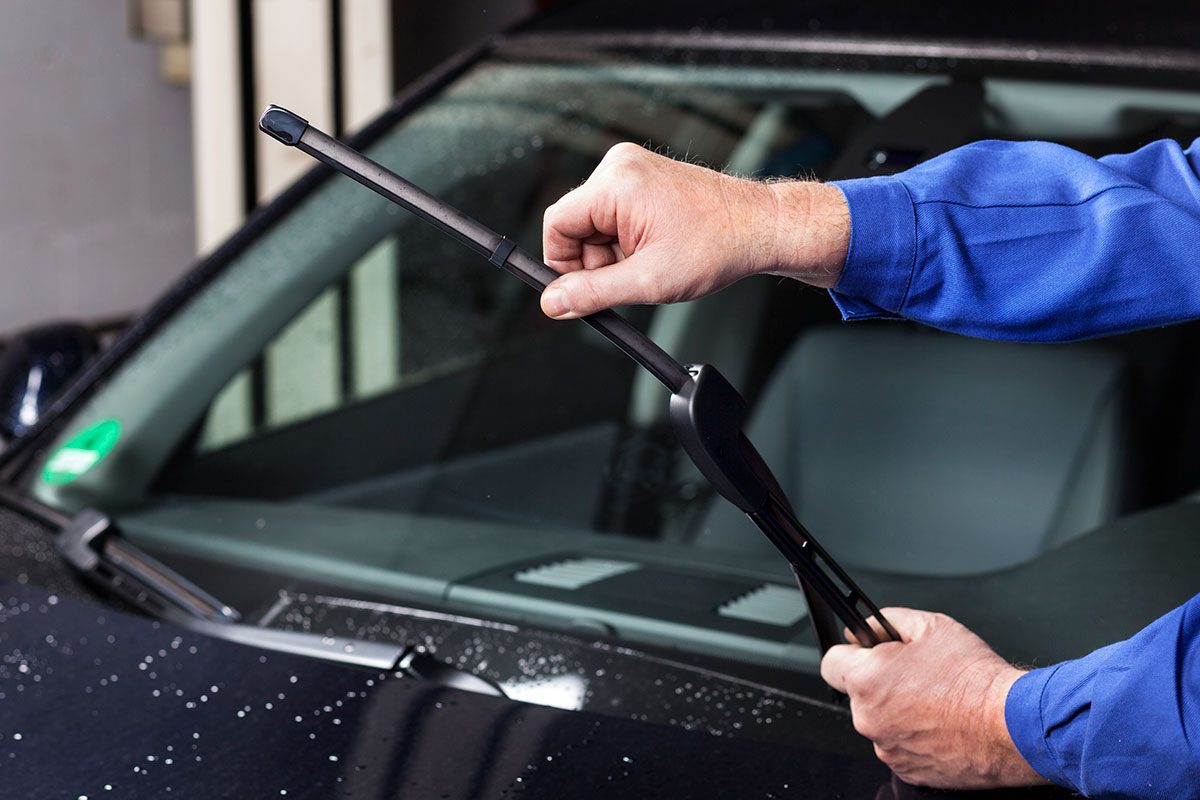Windshield wipers are an important safety feature, and they don't last forever. If you are wondering how long windshield wipers last, checking for damage or wear will help you get a good idea.

How Long Do Windshield Wipers Last? Know When to Change

The back-and-forth swish of windshield wipers clearing your windshield of rain and snow is a reassuring sound. To ensure good visibility, windshield wiper squeegees (AKA inserts or refills—the part that actually touches and clears the windshield) should be replaced regularly, especially after a harsh winter or blazing summer. You also need to inspect the wiper frame that holds the squeegee for damage, as well as the swinging arm assembly.
If left unaddressed, old wipers can squeak or leave streaks across your windshield, making it harder to see clearly through rain or snow.
Read on to learn how long windshield wipers last, how to identify when they need replacing and more.
On This Page
How Long Do Windshield Wipers Last?
Depending on weather and other factors, wiper squeegees should last six to 12 months. To be on the safe side you should replace your windshield wipers every six months.
Factors Impacting Windshield Wiper Longevity
Ultraviolet light, heat, cold, engine exhaust, smog, dust, dirt, road salts and grime can all make wiper squeegees deteriorate.
Relying strictly on your wipers to clear your windshield of ice will quickly damage the squeegees. Incorporating regular wiper cleaning and care can prevent excessive wear, tear and other signs of wiper failure.
Using your wipers to push excess snow off the windshield can easily twist or bend the wiper blades and/or arms. A damaged or weak wiper blade frame or arm cannot keep equal pressure across the entire windshield, causing poor visibility.
Also, before a snowstorm, consider lifting and tilting the wiper arms away from the windshield if your vehicle has this feature to keep the squeegees from freezing to the glass.
- Tip: To extend the life of your wipers in winter, remove snow and ice from the windshield with an ice scraper and defrosters before driving.
How to Identify When Your Wipers Need Replacing
You must consider buying replacement windshield wipers as soon as you notice they’re damaged, noisy or not clearing the windshield properly. Signs include:
- Streaking or smearing of water.
- Blades hopping or jumping across the windshield.
- Torn or worn squeegees with a split or rounded edge rather than square.
- Sweeping passes clear only part of the windshield.
Tips for Prolonging the Life of Your Wiper Blades
Checking your wipers for damage and wear should be an important part of your normal maintenance routine.
- Clean the windshield frequently: Never use your wipers on a dry windshield. Even a tiny piece of grit can quickly damage a wiper squeegee or windshield. Clean the windshield with a glass cleaner formulated for cars. Try balled up newspaper to polish the window glass.
- Clean the wiper squeegees: To remove junk build-up, use a clean, soft cloth soaked with premixed windshield washer solvent or isopropyl (rubbing) alcohol diluted with water to clean the entire length of the squeegee. Be sure to protect your vehicle’s finish and rinse with clean water.
- Run the wipers every so often: Wiper squeegees need to flip on every swipe for the edge to clear the windshield. A wiper that sits in one position too long can dry out, losing its ability to flip. This results in the squeegees being pushed rather than dragged across the windshield, causing wipers to hop and leave streaks.
- Carefully spray a small amount of WD-40 on the wiper arm pivot pin and spring assembly under the wiper arm: This prevents rusting and keeps the squeegees snug against the windshield.
- Always shut off your wipers before turning off your vehicle, and don’t forget about the rear wiper if you have one.
What Type of Wiper Blades Should You Buy?
Not all blades are the same. Here’s a quick guide:
- Standard rubber blades are affordable but wear quickly.
- Silicone blades last longer and perform well in extreme heat and cold.
- Hybrid blades combine a tough frame with flexible rubber for better contact.
- Some premium blades apply a water-repellent coating, helping water bead off the glass.
If you live in a harsh climate, switch between summer and winter blades for the best performance.
FAQs
Are premium wipers worth the investment?
Yes, premium wiper blades made from silicone or hybrid materials typically last longer and perform better than standard ones. They resist wear in extreme heat or cold and maintain a smoother, quieter motion, making them a smart investment for long-term windshield clarity and safety.
What are the best wiper maintenance tips for winters?
Lift the wiper blades away from the windshield during snow or freezing rain to prevent them from sticking. Always use an ice scraper instead of the wipers to remove frost or ice, which can damage the rubber and reduce their effectiveness over time.
Sources
- SAE.org: “Analysis of Windshield Wiper Reversal Impact and Its Suppression by Structural Design”
- AIS Windshield Experts: “When Is Car Wiper Blade Replacement Important?”




















